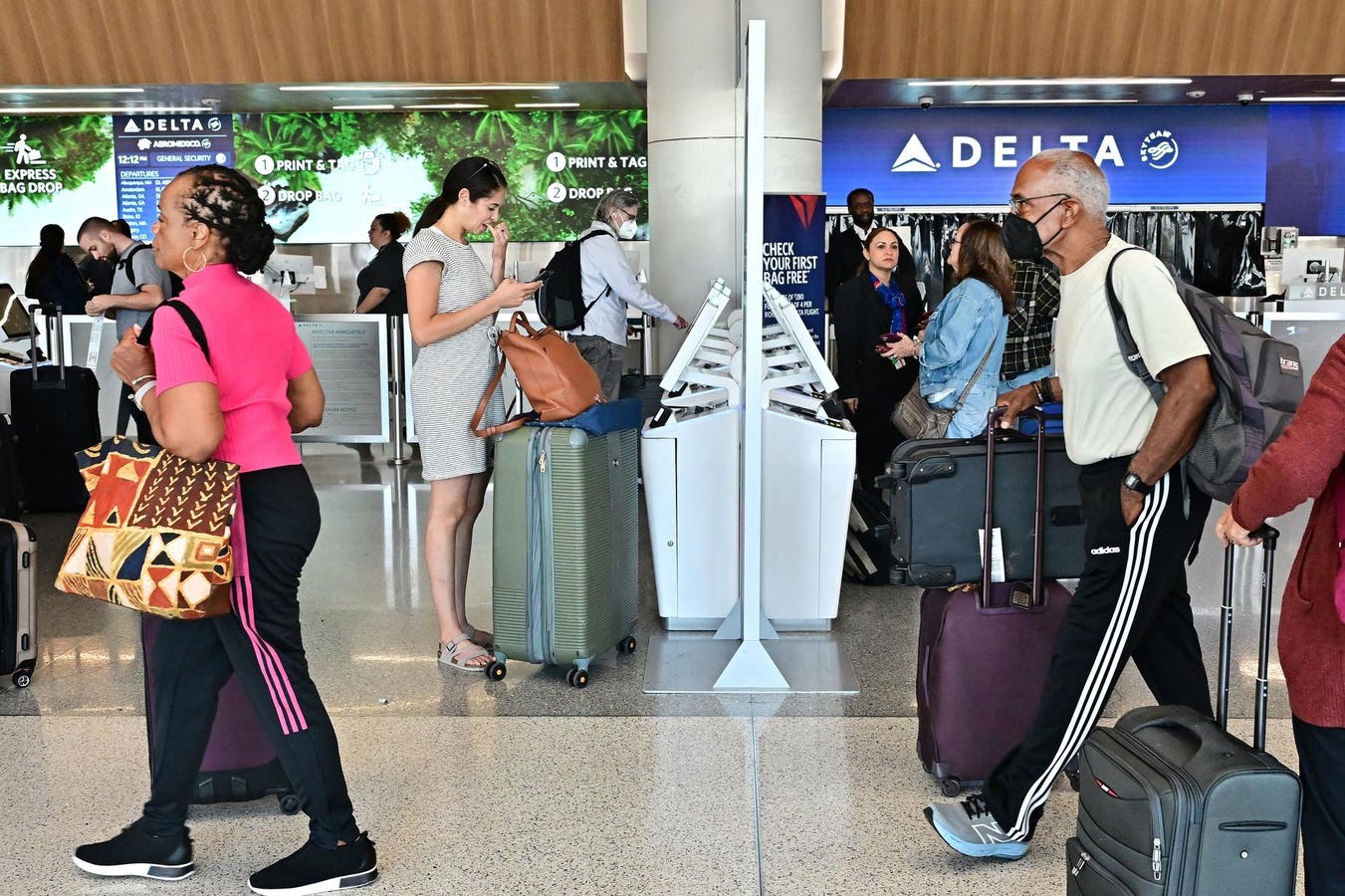The NB.1.8.1 variant of the severe acute respiratory syndrome coronavirus 2 (SARS-CoV-2) has been … More
Remember COVID-19? That thing that’s killed around 350 people a week in the U.S. over the past month and continues to leave more and more people with long Covid? Remember the severe acute respiratory syndrome coronavirus 2 that’s still spreading, mutating, “varianting” and “subvarianting” and causing COVID-19? Well, nota bene or N.B., there’s a new variant of the SARS-CoV-2 in town. It is called the NB.1.8.1 variant, has been causing COVID-19 surges in China, Hong King and Taiwan and is now spreading in the U.S.
XEC And LF.7 Are Past Their Peak While LP.8.1 Is Currently Dominant In The U.S.
Consider NB.1.8.1 to be the latest in the alphabet soup of SARS-COv-2 variants that deserves close attention. Each SARS-CoV-2 variant and subvariant is sort of like fidget spinners, those mustache tattoos on the side of finger and cup stacking. They emerge and spread quickly but then are rapidly supplanted by new variants and subvariants that spread faster. But some have caused more problems than others.
Global virus tracking reports from the scientific community that continues to, you know, work together and collaborate worldwide suggest that the XEC variant that I described for Forbes back in December 2024 is largely on its way out, except for in Japan. Meanwhile, LF.7 seems to have gone the way of the TV series NCIS and already lready peaked.
Right now the dominant variant in North America, parts of South America, much of Europe and South Africa is LP.8.1. This variant was first detected in September 2024 and by the end of 2024 was spreading around the globe. It has been effectively the variant of this past Winter.
NB.1.8.1 And XFG Are Currently Spreading The Fastest
This Spring has seen the rise of the XFG variant, a recombinant of the LF.7 and LP.8.1.2 variants. It was first found in Quebec, Canada, in early February, and near the end of that month U.S. testing started detecting the variant. You could say that XFG has been spreading “extra freaking good” since then. By the end of April, XFG comprised about 10% of all the SARS-CoV-2 samples sequenced in North America and Europe.
But the next month or so may turn out to be grudge match or perhaps a race between the XFG and NB.1.8.1 variants. Both have been spreading at similar rates. But they’ve been doing so in different parts of the world. During the same time period that XFG got a foothold or perhaps a spikehold in North America and Europe, NB.1.8.1 has become the dominant variant in Hong Kong and China. By the end of April, NB.1.8.1 already comprised 5 to 30% of the virus samples sequenced in most other countries.
This may be an Alien vs. Predator situation. Each of these two variants has its competitive advantage. NB.1.8.1 seems to connect to human cells more readily than XFG while XFG seems to be able evade immune protection better. Therefore, which variant becomes more dominant where may depend on everyone’s prior exposure and vaccination status in that location.
NB.1.8.1 Has Led To Surges in ER Visits And Hospitalizations In China And Hong Kong
The NB.1.8.1 variant has been causing a commotion in China and Hong Kong. It’s resulted in emergency room visits and hospitalizations surging higher in those locations than it’s been in at least a year. Hong Kong authorities have been urging their resident to wear face masks in crowded public areas. Meanwhile, Taiwan’s health authorities have been stockpiling vaccines and antiviral treatments to respond to the NB.1.8.1 -dirven wave that they’ve seen too.
So far, there’s no clear indication that NB.1.8.1 is more likely to cause more severe health outcomes than previous SARS-CoV-2 variants. But stay tuned because more studies are needed to get a better handle on what both NB.1.8.1 and XFG can do and which may eventually come out the winner.
NB.1.8.1 Is Now Being Detected in the U.S.
The U.S. doesn’t currently have a organized and comprehensive surveillance system for SARS-CoV-2 since its only had like five years to set one up, right? So, it must rely on incidentally picking up new variants. That will occur if a person chooses to get tested, if that person chooses not to use a home test but instead goes to somewhere connected to a laboratory to get tested, if that laboratory either has the capability of sequencing the genetic material and chooses to do so or send the sample to a laboratory that does such a thing and if the results of the sequencing are reported to public health officials. That’s a lot of ifs.
Nevertheless, the NB.1.8.1 variant is clearly already in the U.S. It’s come up in the Centers for Disease Control and Prevention’s airport screening program among international travelers entering via California, Washington state, Virginia and the New York City area airports. There have been reported NB.1.8.1 cases in Ohio, Rhode Island and Hawaii as well. So once can assume that the NB.1.8.1 has already got a spikehold in American.
What Does The NB.1.8.1 Variant Mean For Vaccination?
The COVID-19 vaccines available right now contain either the spike proteins (the Novavax vaccines) from a previous variant or mRNA that codes for these spike proteins (the Pfizer and Moderna mRNA vaccines). These updated vaccines were first rolled out last Fall and targeted the KP.2 variant, a descendant of the JN.1 variant. For the vaccines to be available this Fall, there had been talk of either no changes in the vaccines or updating with a more recent variant such as LP.8.1. While the currently available vaccines coudl provide some protection against NB.1.8.1, you’d get better protection with a vaccine targeting LP.8.1 because as a variant that’s emerged more recently L.P.8.1 is more similar to NB.1.8.1.
What Is The U.S. Doing About The NB.1.8.1 Variant?
So, what else then is the U.S. doing about the NB.1.8.1? How about not a whole lot? Politicians have already politicized the heck out of COVID-19 control measures like face mask use. The U.S. Food and Drug Administration is now talking about rolling back approval of the COVID-19 vaccines to just those over 65 years of age or with at least one chronic medical condition. With immunity from prior vaccination and infection will such rollbacks means that a greater proportion of the population will once again be more vulnerable to the latest circulating variants?
At this point, don’t expect too much guidance from the federal government as to what to do about the NB.1.8.1 variant or COVID-19 in general, for that matter. Five years after the COVID-19 pandemic first started, the U.S. still does not have a clear long term strategy on how to deal with COVID-19 and long COVID. Don’t expect this to change with especially with all the personnel cuts that have been happening at the CDC and National Institutes of Health under the Trump Administration and Elon Musk’s DOGE, otherwise known as the Department of Government Efficiency. While SARS-CoV-2 isn’t the same threat that it was in 2020 and 2021 in large part because your immune systems is more used to the virus, the virus has not gone away or become harmless no matter what politicians may try to tell you.







